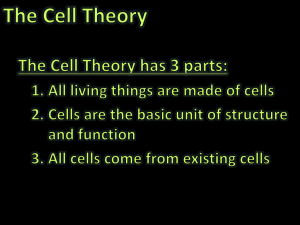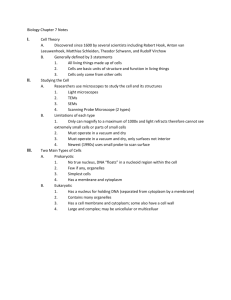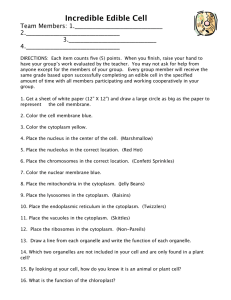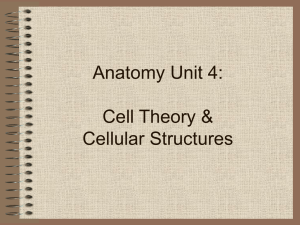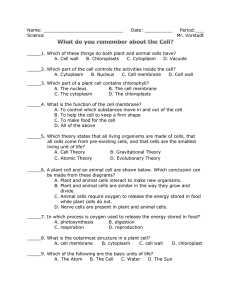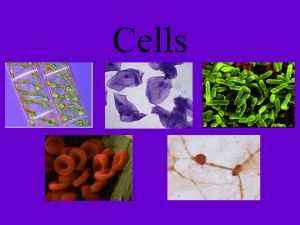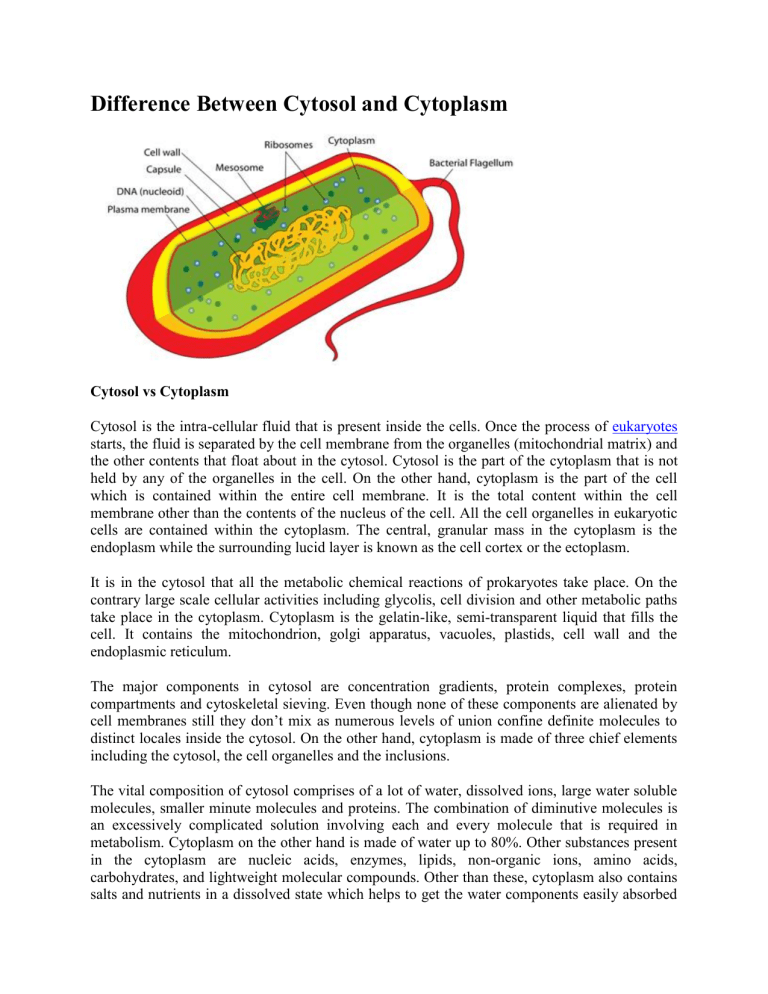
Difference Between Cytosol and Cytoplasm Cytosol vs Cytoplasm Cytosol is the intra-cellular fluid that is present inside the cells. Once the process of eukaryotes starts, the fluid is separated by the cell membrane from the organelles (mitochondrial matrix) and the other contents that float about in the cytosol. Cytosol is the part of the cytoplasm that is not held by any of the organelles in the cell. On the other hand, cytoplasm is the part of the cell which is contained within the entire cell membrane. It is the total content within the cell membrane other than the contents of the nucleus of the cell. All the cell organelles in eukaryotic cells are contained within the cytoplasm. The central, granular mass in the cytoplasm is the endoplasm while the surrounding lucid layer is known as the cell cortex or the ectoplasm. It is in the cytosol that all the metabolic chemical reactions of prokaryotes take place. On the contrary large scale cellular activities including glycolis, cell division and other metabolic paths take place in the cytoplasm. Cytoplasm is the gelatin-like, semi-transparent liquid that fills the cell. It contains the mitochondrion, golgi apparatus, vacuoles, plastids, cell wall and the endoplasmic reticulum. The major components in cytosol are concentration gradients, protein complexes, protein compartments and cytoskeletal sieving. Even though none of these components are alienated by cell membranes still they don’t mix as numerous levels of union confine definite molecules to distinct locales inside the cytosol. On the other hand, cytoplasm is made of three chief elements including the cytosol, the cell organelles and the inclusions. The vital composition of cytosol comprises of a lot of water, dissolved ions, large water soluble molecules, smaller minute molecules and proteins. The combination of diminutive molecules is an excessively complicated solution involving each and every molecule that is required in metabolism. Cytoplasm on the other hand is made of water up to 80%. Other substances present in the cytoplasm are nucleic acids, enzymes, lipids, non-organic ions, amino acids, carbohydrates, and lightweight molecular compounds. Other than these, cytoplasm also contains salts and nutrients in a dissolved state which helps to get the water components easily absorbed by the cell. The cytoplasm is an excellent conductor of electricity. Moreover, the presence of cytoplasm within the cell helps the various materials to navigate all around within the cell with the help of cytoplasmic streaming. Summary: 1. Cytosol is the intra-cellular fluid that is present inside the cells. On the other hand, cytoplasm is that part of the cell which is contained within the entire cell membrane. 2. Cytosol comprises of a lot of water, dissolved ions, large water soluble molecules, smaller minute molecules and proteins. Cytoplasm on the other hand is made of water up to 80% nucleic acids, enzymes, lipids, non-organic ions, amino acids, carbohydrates, and lightweight molecular compounds. 3. It is in the cytosol that all the metabolic chemical reactions of prokaryotes take place. On the contrary large scale cellular activities including glycolis, cell division and other metabolic paths take place in the cytoplasm.
